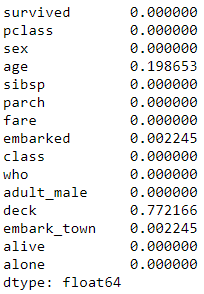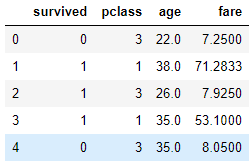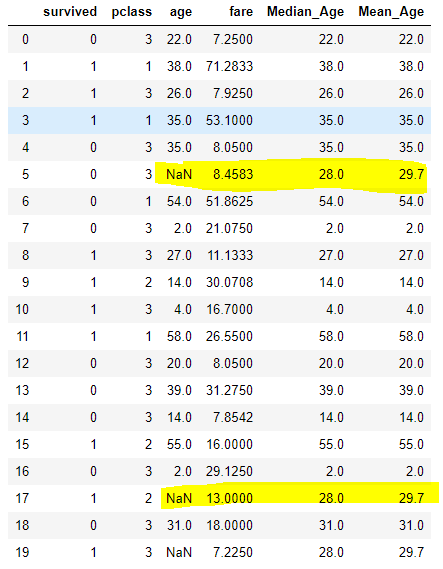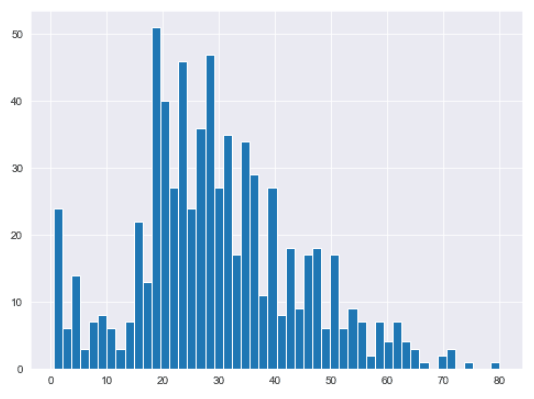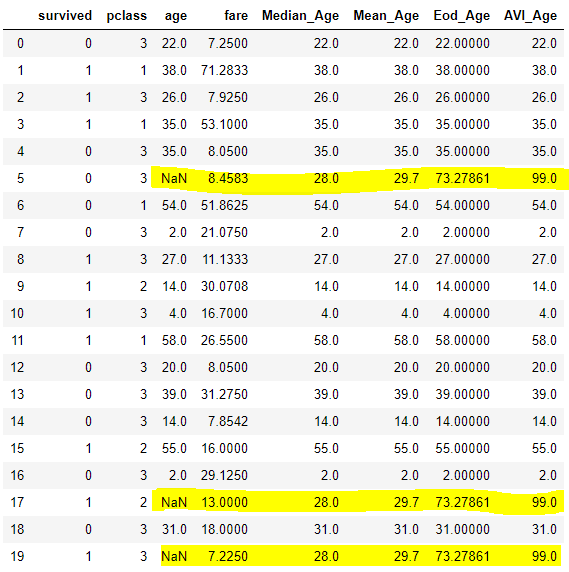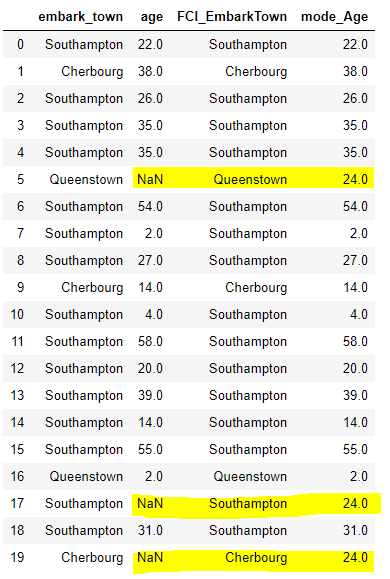Machine learning algorithms are trained using datasets. A common problem, though, is that these datasets often have missing values. This can happen for many reasons, including unavailability of information, technical faults, and accidental removal of data. The bottom line is these missing values can negatively impact the performance of your machine learning algorithms.
Fortunately, several techniques have been developed to handle missing values in the datasets for machine learning. In this tutorial, we’ll describe some of these techniques and how to implement them in Python.
The process of replacing missing values with substituted values is called imputation. Before we get to these imputation techniques, we’re going set up our Python environment with our required libraries and sample data.
Note: All the codes in this article are compiled with the Jupyter Notebook.
Installing Required Libraries
To run the scripts in this tutorials, you’ll need to install Seaborn, Pandas, Numpy and Matplotlib libraries. Execute the following script on your command terminal to install these libraries.
$pip install matplotlib $pip install seaborn $pip install pandas $pip install numpy
Importing Required Libraries
Next, import the libraries required to run the scripts in this tutorial by adding the following lines to your Python code:
import pandas as pd
import numpy as np
import matplotlib.pyplot as plt
import seaborn as snsThe Dataset
The dataset we’ll use to try our missing data handling techniques on is the Titanic Dataset built into the Seaborn library. It contains information about the passengers who travelled with the Titanic ship that sank in 1912. Conveniently, the dataset contains some missing values. We’ll learn how to handle or impute those missing values throughout the rest of this tutorials.
The following script imports the dataset and displays its first five rows:
dataset = sns.load_dataset('titanic')
dataset.head()Output:
Now, let’s see the fraction of null values in each of the columns in this dataset. Run the following script:
dataset.isnull().mean()Output:
The above output shows that 19% of the data in the age column is missing, whereas 0.2% of the data is missing from the embarked column. Also, 77% of the data in the deck column is missing!
Missing data can be broadly categorized into two types: Numeric Missing Data and Categorical Missing Data. Based on the type of missing data, different data handling techniques are used. Let’s first see how to handle numeric missing data.
Handling Numerical Missing values
Numeric data, as the name suggests, is data consisting of numbers, like the age of a passenger or price of a ticket.
Let’s filter some of the numeric columns from the Titanic dataset and display the first five rows of the filtered data. Execute the following script:
filtered_data = dataset[["survived", "pclass", "age", "fare"]]
filtered_data.head()Output:
In the next sections, we’ll finally show you some of the techniques used to impute the numeric data, or replace the missing data with substituted data.
Mean and Median Imputation
In the mean and median imputation, the missing values in the dataset are either replaced by the mean or median of the remaining values.
Let’s find the mean and median values from the existing values in the age column.
median_age = filtered_data.age.median()
print(median_age)
mean_age = filtered_data.age.mean()
print(mean_age)Output:
28.0
29.69911764705882The following script creates two columns: fillna method makes this really simple. Similarly, the
filtered_data['Median_Age'] = filtered_data.age.fillna(median_age)
filtered_data['Mean_Age'] = filtered_data.age.fillna(mean_age)
filtered_data['Mean_Age'] = np.round(filtered_data['Mean_Age'], 1)
filtered_data.head(20)Output:
From the output above, you can see that for the rows where the age column contains null values, the
End of Distribution Imputation
In the “end of distribution imputation” technique, missing values are replaced by a value that exists at the end of the distribution. To find the end of distribution value, you simply add the mean value with the three positive standard deviations. This technique is ideal for data that closely models a normal distribution, since three standard deviations contain ~99.7% of the data, according to the empirical rule.
This section shows how to use the end of distribution imputation for the age column. Let’s first plot a histogram for the age column.
plt.rcParams["figure.figsize"] = [8,6]
sns.set_style("darkgrid")
filtered_data.age.hist(bins=50)Output:
It’s clearly not a perfect normal distribution, but the end of distribution value should occur at the end of the distribution, somewhere between 70 and 80.
The following script finds the end of distribution value.
end_distribution_val = filtered_data.age.mean() + 3 * filtered_data.age.std()
print(end_distribution_val)Output:
73.27860964406095The end of distribution value is 73.27 for the age column. The following script creates a new column
filtered_data['Eod_Age'] = filtered_data.age.fillna(end_distribution_val)
filtered_data.head(20)Output:
The highlighted rows in the above output shows how the null or missing values in the age column have been replaced by 73.27 in the Eod_Age column.
Arbitrary Value imputation
In arbitrary value imputation, you simply replace the null values by some arbitrary value. The arbitrary value should not be present in the dataset and should be quite different from the existing values. A common choice for arbitrary value is any combination of 9s, like 99,9999. Alternately, in cases where all the values in a column are positive, you can choose -1 as an arbitrary value. The following script replaces missing values with an arbitrary value of 99.
filtered_data['AVI_Age'] = filtered_data.age.fillna(99)
filtered_data.head(20)Output:
Code More, Distract Less: Support Our Ad-Free Site
You might have noticed we removed ads from our site - we hope this enhances your learning experience. To help sustain this, please take a look at our Python Developer Kit and our comprehensive cheat sheets. Each purchase directly supports this site, ensuring we can continue to offer you quality, distraction-free tutorials.
Handling Missing Categorical Data
Categorical data is the type of data where values represent a certain category instead of numbers. For example gender of a person, the city where a person is from, whether or not a person is smoker, the nationality of a person, etc.
Recall the
filtered_data = dataset[["embark_town", "age", ]]
filtered_data.isnull().mean()Output:
embark_town 0.002245
age 0.198653
dtype: float64Again, the output shows that 19% of the data in the
Frequent Category Imputation
In frequent category imputation, the missing categorical values are replaced by the most frequently occurring value. The most frequently occurring value is called the mode.
To find the most frequently occurring value in a column, use the mode() function. The following script finds the most frequently occurring category in the embark_town column.
station = filtered_data.embark_town.mode()[0]
print(station)Output:
SouthamptonThe output shows that Southampton is the most frequently occurring category in the embark town column.
The following script replaces the missing value in the
filtered_data['FCI_EmbarkTown'] = filtered_data.embark_town.fillna(station )
filtered_data.head(20)Frequent category imputation can also be used to replace missing values in a numerical column. The mode of values in a numeric column is similar to the most frequently occurring category in a categorical column. Let’s find mode of the values in the age column.
mode_age = filtered_data.age.mode()[0]
print(mode_age)Output:
24.0The mode of the age column is 24. The following script creates a column
filtered_data['mode_Age'] = filtered_data.age.fillna(mode_age)
filtered_data.head(20)Output:
Missing Value Imputation
In missing value imputation, you simply replace a missing categorical value by a value that doesn’t exist in the column. You can give any name to the missing value. The following script replaces missing values in the
filtered_data['MVI_EmbarkTown'] = filtered_data.embark_town.fillna("Missing")
filtered_data.head(20)To prove the missing value imputation technique worked in the above Python code, let’s filter the rows where
filtered_data1 = filtered_data[filtered_data["embark_town"].isna()]
filtered_data1.head()Output:
The output shows our new
Once you’re finished imputing all the missing values in your datasets, you’re ready to train your machine learning algorithm. TensorFlow 2.0 is a great tool for training both regression models and classification models
For more Python data manipulation techniques like this, please join us using the form below:
Code More, Distract Less: Support Our Ad-Free Site
You might have noticed we removed ads from our site - we hope this enhances your learning experience. To help sustain this, please take a look at our Python Developer Kit and our comprehensive cheat sheets. Each purchase directly supports this site, ensuring we can continue to offer you quality, distraction-free tutorials.

